 Hello, readers — it’s been a while! Time seems to be passing ever faster for me with each new year of life. I was surprised to realize that it’s been a couple months since I posted a blog. So here is a column that I just submitted to a local newspaper with a few more photos than the paper could accommodate.
Hello, readers — it’s been a while! Time seems to be passing ever faster for me with each new year of life. I was surprised to realize that it’s been a couple months since I posted a blog. So here is a column that I just submitted to a local newspaper with a few more photos than the paper could accommodate.
 One of my favorite local reptiles is the Carolina anole (Anolis carolinensis). These cute lizards can be seen year-round since they don’t hibernate. In my experience, however, they seem to be more active — or at least viewable — in late summer and early autumn.
One of my favorite local reptiles is the Carolina anole (Anolis carolinensis). These cute lizards can be seen year-round since they don’t hibernate. In my experience, however, they seem to be more active — or at least viewable — in late summer and early autumn.
 Also known as green anoles, they are the only anoles native to the southeastern United States. Green is nevertheless not their only color. You may encounter dark brown, light brown and green/brown anoles and they might even change their coloring as you watch them.
Also known as green anoles, they are the only anoles native to the southeastern United States. Green is nevertheless not their only color. You may encounter dark brown, light brown and green/brown anoles and they might even change their coloring as you watch them.
 Unlike chameleons, who change color to blend in with their surroundings so that they can hide more easily from predators, anoles mainly change their skin hues in response to stress or their mood, when they are active or when they want to defend a territory. Darker colors may indicate that they are feeling cold or stressed out.
Unlike chameleons, who change color to blend in with their surroundings so that they can hide more easily from predators, anoles mainly change their skin hues in response to stress or their mood, when they are active or when they want to defend a territory. Darker colors may indicate that they are feeling cold or stressed out.
Sometimes when I’ve watched individuals at length, it’s seemed to me as if they were expressing a variety of moods, even if they didn’t change color.
Full-grown males are larger than females, but you can also guess their sex based on anatomical features. When males hope to attract a female for mating, they display a brightly colored reddish flap underneath their jaws called a dewlap. When a female sees it, this may induce her to ovulate. Males also show their dewlaps when defending territory against other males.
Female anoles can often be distinguished by a row of white markings along their spine, which most males lack.
 Like other lizards, anoles regularly shed their skin. Observation last year taught me that they may also eat that skin since this provides them with extra nutrients that may be lacking in their direct environment.
Like other lizards, anoles regularly shed their skin. Observation last year taught me that they may also eat that skin since this provides them with extra nutrients that may be lacking in their direct environment.
Their regular diet is varied, including flies, beetles, spiders, cockroaches, worms, ants, termites, moths and butterflies. Seeds and grains can form part of their meals as well.
Carolina anoles are known as arboreal lizards because they spend a lot of time in trees and shrubs. From a higher perch, they can survey their surroundings. Climbing up shrubs and trees can also help them escape from predators who cannot follow them because they lack the sticky foot pads that enable anoles to ascend vertically. Other predators, such as tree snakes and larger lizards, can catch them if they are quick.
Sometimes, a predator may catch a green anole by the tail and the anole escapes by dropping its tail—a defensive behavior known as caudal autotomy. A new tail will grow but will be weaker as it contains cartilage instead of bone and often will not be as long.
Recently, I learned that birds also hunt anoles when I photographed a blue jay who had caught one. Other birds in our area who go after them include kestrels and bluebirds.
The Carolina anoles usually live from about 2 to 8 years. A few who live around my front porch sometimes approach me closely and it’s noticeable that they are watching me, too.
Another one decided that an unused bluebird nest box was a good place to hide from predators, obviously not during birds’ nesting season!
 It’s been so nice to see the anoles out and about the past weeks. Tonight, we’re having our first freeze of the 2022 autumn/winter season so the anoles may start seeking warm places to hang out. Hopefully, they will have found good places to over-winter.
It’s been so nice to see the anoles out and about the past weeks. Tonight, we’re having our first freeze of the 2022 autumn/winter season so the anoles may start seeking warm places to hang out. Hopefully, they will have found good places to over-winter.
 Readers in the southeast USA who would like information on how to create habitats that can harbor anoles and other native reptiles and amphibians can check out this information site: Reptiles and Amphibians in Your Backyard.
Readers in the southeast USA who would like information on how to create habitats that can harbor anoles and other native reptiles and amphibians can check out this information site: Reptiles and Amphibians in Your Backyard.
My next blog will be the first of a series about Yellowstone National Park. I’d originally planned to post the series this past summer but then couldn’t find some photos I’d taken. The missing card “turned up,” so a photographic tour of the park before it flooded this past June will soon commence.
Have a great day!



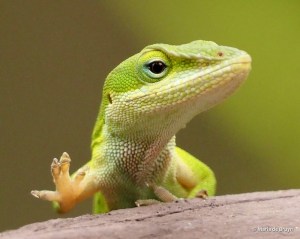

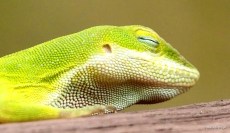
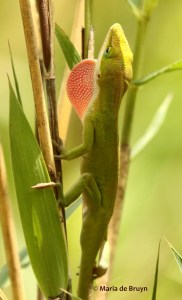
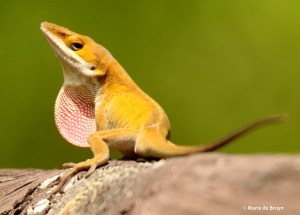


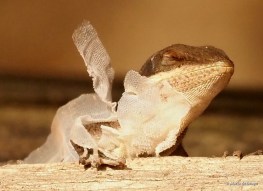



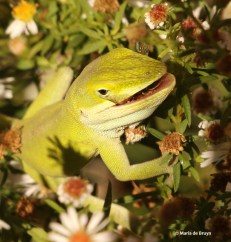
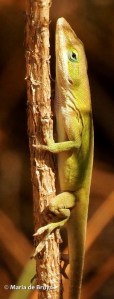
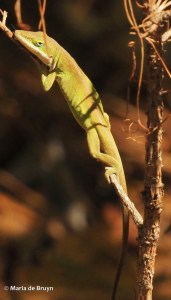
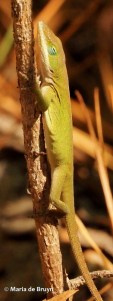

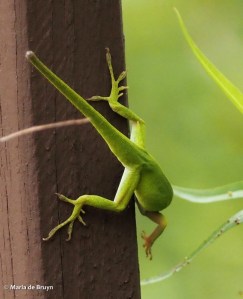

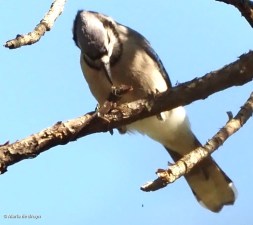



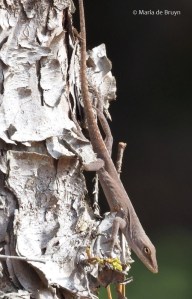
What nice photos of anoles! Your yard would be a perfect place for them to live and multiply. I really like them, too, and was very pleased this summer to see that my one anole of last summer had become two and had been joined by a 5-lined skink. They lived on my front porch, and I would often see them basking on the sunny railing and drinking from the plant saucer that I keep filled with water for the birds also on the railing.
LikeLiked by 1 person
Thanks, Lucretia! How nice that your anole found a mate (or had offspring who stayed around)! Cool that you have a skink, too – haven’t seen one of them in the yard here. The other reptile that I see here semi-regularly is a black rat snake. I have a container on the porch with water from which birds and chipmunks drink – haven’t seen the anoles there.
LikeLike